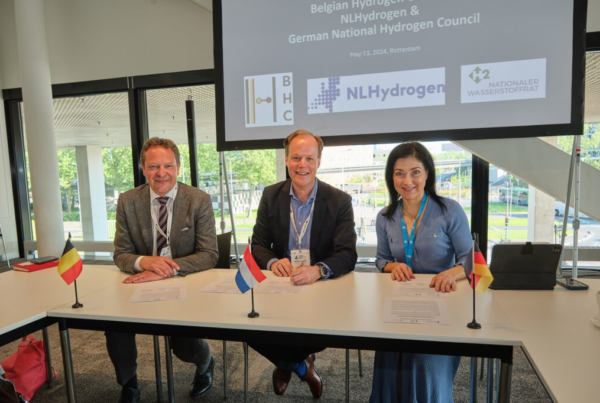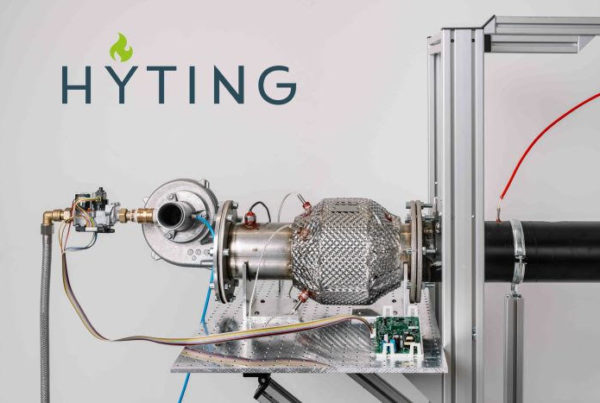
The production plant in Lubmin produces green hydrogen in northeast Germany. Transport by flow – making hydrogen happen to the consumption regions.
Baruth — A significant milestone for Germany’s green hydrogen economy: GASCADE confirms the network connection of HH2E’s green hydrogen production site in Lubmin on the German Baltic Sea coast with the European gas connection line (EUGAL lines 1 and 2).
HH2E plans to begin producing green hydrogen in Lubmin by the end of 2025, with the ability to blend green hydrogen significantly helping to replace natural gas and promote a more sustainable energy future. Initially, the pipelines will transport a mix of hydrogen and natural gas.
As soon as the capacities of the Flow – making hydrogen happen pipeline are bookable, HH2E will begin to use them. This large-volume onshore pipeline system from the Baltic Sea coast to southern Germany is part of the draft German hydrogen core network and confirmed by the European Commission as a “Project of Common Interest”.
“For us, the addition of hydrogen is an important intermediate step on the way to transporting pure hydrogen,” says GASCADE Managing Director Ulrich Benterbusch. “By converting existing pipelines from natural gas to transporting hydrogen, we are actively driving forward the transformation process in the energy sector. With the Flow – making hydrogen happen project, we will create substantial transport capacities and a central axis in German hydrogen transport in 2025.”
The two companies’ agreement marks a significant step forward and is the first hydrogen blending contract for both HH2E and GASCADE. After a year of joint technical planning, this move enables a seamless flow of green hydrogen from Lubmin through GASCADE’s pipelines and demonstrates its commitment to innovative and sustainable energy solutions.
Related: Germany: HH2E Identifies Five Key Hydrogen Production Locations Originating from Tegel
Adding green hydrogen to natural gas offers several advantages. First, it reduces carbon emissions because green hydrogen is produced from renewable sources, resulting in a cleaner fuel mix. This blending can occur using existing natural gas infrastructure, making it a cost-effective transition strategy for greener energy. It also increases energy security by diversifying fuel supplies and reducing dependence on fossil fuels. In addition, it promotes the development and scaling of green hydrogen production technologies that can have broader applications in various sectors. Overall, adding green hydrogen to natural gas is a practical step towards reducing environmental impact and leveraging existing energy systems.
About HH2E
As a pioneer in Germany’s green energy sector, HH2E uses advanced technologies to transform intermittent renewable energy inputs, particularly excess energy from solar and wind sources, into a consistent flow of green hydrogen.
By 2030, HH2E aims to build 4 GW of green hydrogen production capacity in Germany, which represents a significant investment. The company has already announced plans for two large plants: one in Lubmin, Mecklenburg-Western Pomerania, and another in Thierbach, in the south of Leipzig, Saxony. In addition, 10 main locations across Germany have been identified for green hydrogen production, with a focus on the eastern region.
In the future, HH2E intends to also transport hydrogen via dedicated pipelines, in line with Germany’s ambitious climate goals and growing industrial demand for hydrogen. Lubmin is on track to become a central hub for this development, with plans for the Flow – making hydrogen happen H2 pipeline and ongoing discussions on technical network connections with GASCADE.
About GASCADE
GASCADE Gastransport GmbH operates a Germany-wide gas pipeline network. The network company, based in Kassel, offers its customers modern and competitive transport services for natural gas and, in the future, other gases in the heart of Europe via its own, around 3,700 kilometer long high-pressure pipeline network. GASCADE is pursuing the goal of gradually converting its pipeline network to the transport of hydrogen and is therefore active in several onshore and offshore hydrogen projects.
Read the most up to date Fuel Cell and Hydrogen Industry news at FuelCellsWorks




